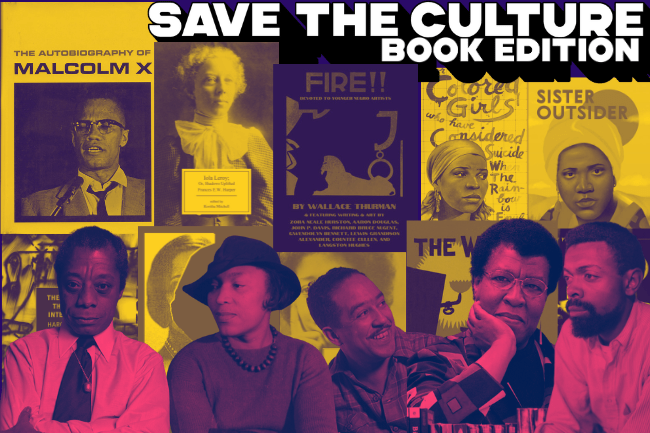Remember when time capsules were a thing?
For the uninitiated, groups of people nationwide would accrue the items they felt best represented their era, stow said items in a container of some sort, and hide said container to be one day discovered by future generations as evidence of how we once did things on planet Earth.
Think of our SAVE THE CULTURE series as a modernized version of the time capsule. In 2025, a quarter of the way into this pivotal century and nearly 100 years since the iconic Harlem Renaissance — an era that profoundly shaped Black artistic expression and cultural identity — this project feels especially urgent. There is no doubt that many people feel that there are very deliberate attempts by some to erase the contributions of Blacks from history. Whether those sentiments are unfortunate misperceptions or turn out to very legitimate based on very real actions, we felt the need to do our part to ensure that the legacy of Black influence on global culture never fades.
Throughout the summer and fall, our editorial team will be highlighting elements of culture essential to understanding the Black American experience, in genres ranging from film and television to music and literature, and so much more in-between. By spotlighting landmark cultural creativity, we aim not only to preserve and honor the rich legacy of Black culture, but also to inspire ongoing dialogue, foster greater appreciation, and provide future generations with a vibrant record of how our culture thrived at this defining moment in history.
For this issue of the SAVE THE CULTURE series, we reached out to Dr. Tony Medina, director of the Howard creative writing program, to compile a list of 20 essential works of Black literature. Given the innumerable works to choose from, he instead wrote 21, (and of course we needed to add a couple of our own honorable mentions). Spanning from before the civil war to today and from novels to poetry to plays to critiques, these works are only a few examples of how monumental African American writers have been, from giving voice to the enslaved and oppressed to radically shifting all of literature and inspiring new ways of approaching what it means to be Black.
What books are missing from the list? Which books would you add? Send us your essential pieces of literature to magazine@howard.edu.
Black Bourgeoisie by E. Franklin Frazier (1955)
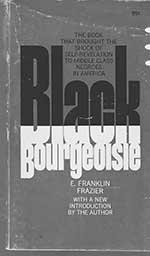
In this seminal text, E. Franklin Frazier (B.A. 1916) provides a historical analysis of the class forces in Black America deriving from enslavement. Malcolm X’s notion of the House Negro and the Field Negro comes to mind when Frazier, former chairman of the Howard Department of Sociology, shows how the Black well to do have strived up the class ladder, many times mimicking the white well to do.
The Crisis of the Negro Intellectual by Harold Cruse (1967)
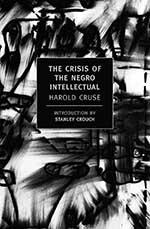
This important historical analysis posits that the Black intellectual is caught up in an existential quagmire, knowing intellectually what the major problem of Black people in America is but is unable to solve it because that would mean certain critical revolutionary measures must be achieved. The book is unsparing in its critique of a spectrum of Black intellectuals, artists, and social leaders and remains capable of sparking debates among Black studies circles and activists alike to this day.
Fire!! Harlem Renaissance journal (1926)
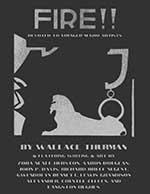
This communally self-published, literary and arts journal, only published once, announced the major voices and concerns of the writers of the New Negro Movement (known as the Harlem Renaissance). The name, according to co-founder Langston Hughes, was “to burn up a lot of the old, dead conventional Negro-white ideas of the past ... into a realization of the existence of the younger Negro writers and artists and provide us with an outlet for publication not available in the limited pages of the small Negro magazines then existing.” With pieces focusing on homosexuality, bisexuality, prostitution, and colorism, it managed to rustle the feathers of its main patrons: the Black bourgeoisie who were concerned with respectability politics rather the independent free thinking of young Black artists. Even W.E.B. DuBois had a problem with the likes of Hughes, Zora Neale Hurston and Wallace Thurman, et al.
Black Fire edited by LeRoi Jones (Amiri Baraka) and Larry Neale (1968)
This major American anthology was a major advancement in Black literature because it represents the works of writers emerging post-Harlem Renaissance, with some distinct ideas regarding Black art production and a break from white patronage for Black institution building. This generation was also not preoccupied with notions of respectability politics, for it was more radical standing on the shoulders of the artists of the Harlem Renaissance.
In Search of Our Mothers’ Gardens by Alice Walker (1983)
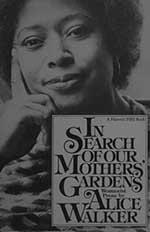
In this rich and varied collection of essays by Alice Walker, two things stick out to me from a couple of the major pieces: She resurrects Zora Neale Hurston, who had shamefully been long buried and forgotten; and she posits her notion of Womanism, which challenges American feminism to recognize the extra layers of oppression women of color must endure, recentering the notion of race overlooked or ignored by white feminists.
Sister Outsider by Audre Lorde (1984)
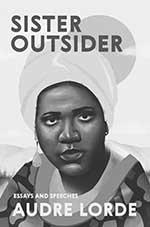
In this book of essays you get a powerful cross section of Audre Lorde’s political and philosophical belief system as she defines and redefines herself as a Black Woman Lesbian Warrior, prefiguring Third Wave feminism and the Womanist movements in America. In the collection, made up of essays from 1976 to 1984, Lorde focuses on the complexities of both her intersectional identity and interlocking forms of oppression.
For Colored Girls who have Considered Suicide / when the rainbow is enuf by Ntozake Shange (1975)
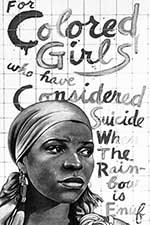
This literary piece, consisting of poetry structured into a theater piece, was groundbreaking in form as well as content. Centering the struggles of Black women, this is a performance piece that has inspired generations of poets, playwrights, and students alike. Weaving stories of seven nameless women, the piece was the second play by a Black woman to reach Broadway and is performed to this day, including a 2022 Tony-nominated revival.
The Weary Blues and The Best of Simple by Langston Hughes (1925, 1961)
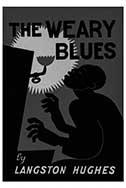
These two seminal works mark the work of Langston Hughes, one of the first American poets to successfully integrate the blues musical form into poetry. Langston’s poetry speak to the concerns of Black people historically in a wide range of aesthetic turns, while the stories of Jess B. Semple portray an everyman figure in Black literature able to successfully satirize the major social, political, and historical zeitgeist of the times, which still resonates today.
“The Best of Simple” is available from Macmillan publishers. “The Weary Blues” is in the public domain and can be read for free at Project Gutenberg.
Passing by Nella Larsen (1929)
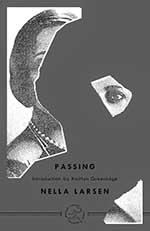
This novel is a great depiction of the complexities of race and color and the notion of passing to get over or survive. It challenges notions of race and class as well as the challenges women face(d) in society in the Black and white world. Through the lives of childhood friends Irene and Clare, the book explores how racism, class, and sexual repression interconnect and inform how Black women navigate the world to this day.
“Passing” is in the public domain and can be read online through HathiTrust, as well as purchased from Penguin Random House.
The New Jim Crow: Mass Incarceration in the Age of Colorblindness by Michelle Alexander (2010)
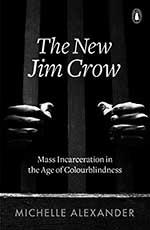
The New Jim Crow provides an important interrogation of the prison industrial complex disproportionately warehousing Black and Brown people into increasingly privatized prisons, creating a new, shadow slavocracy. The book rejects the notion that the systemic racism of Jim Crow was ended by the civil rights movement, proposing that mass incarceration and the war on drugs have changed the language used to justify oppression. We can make parallels with the anti-immigration push during the Trump administration.
Mumbo Jumbo by Ishmael Reed (1972)
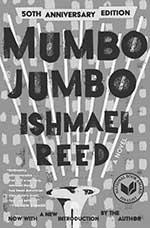
In this experimental novel, Ishmael Reed explores through satire and fragmented narratives the major forces plaguing the Black community by attempting to ban and abolish its culture which primarily derives from African and African American traditions and folklore. Through formats ranging from film scripts to letters to annotated scholarly papers, the novel deconstructs how history is told and who controls it.
Reflex & Bone Structure by Clarence Major (1996)
Another Black experimental narrative that stretches the imagination and reality itself. Major takes cinematic, jazz improvisational, surrealistic narrative leaps to examine a love triangle interrupted by a death or murder. Through 433 nonlinear fragments, the unreliable narrator weaves poetry, prose, and even just lists of Black artists, challenging readers' notions of genre, character, and African American life.
Originally published by the Fiction Collective, “Reflex & Bone Structure” is available through Major’s website.
Furious Flower anthologies (1999, 2004, 2020)
These anthologies, produced by the Furious Flower Poetry Center, named after a metaphor from Gwendolyn Brooks, encompass three to four generations of Black poetry predating the Black Arts Movement to the present. Housed at James Madison University, since the 90s the center has been a vital space for cultivating and preserving Black poetry. The most recent collection of over 100 poets — accompanied by essays by leading scholars — provides not only a thorough look at the past, but a guide toward the future of Black poetry.
All of the anthologies, along with the publishers, are available on the Furious Flower Poetry Center website.
Kindred by Octavia Butler (1979)
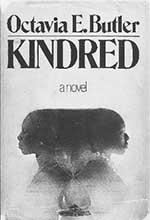
Kindred provides a rich, science fictional narrative of a Black woman pulled back into the past of her enslaved ancestor through time travel and pain. As the protagonist, Dana, travels between her life in 1970s Los Angeles with her white husband and the lives of her ancestors in the antebellum South in Maryland, the novel brings to light how the legacy of slavery continues to impact our lives today.
Cane by Jean Toomer (1923)
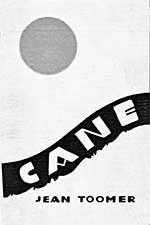
Quiet as it has been kept, Cane is a modernist, experimental novel that is frequently overshadowed by white American and European literary modernists. It stands as a major achievement in American literature in general and African American literature in particular, representing a hybrid text (incorporating poetry, prose, and drama) decades before the recent appropriation of the term hybrid. Cane examines the beauty and complexity of Black life in the American South post enslavement.
Originally published by Boni & Liveright, “Cane” is in the public domain and available online.
The Price of the Ticket by James Baldwin (1985)
This gem encompasses the full expanse of James Baldwin’s personal and political essays examining the American psyche vis-à-vis race, class and sexual and gender oppression, some of which make a direct link between the oppression of Black people in America with that of the oppression of Algerians in America, as well as those of the Palestinian people.
Beacon Press
Their Eyes Were Watching God by Zora Neal Hurston (A.S. 1924) (1937)
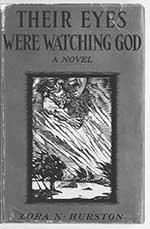
This groundbreaking work of fiction depicts a Black love story like no other. In it, we see reflected a very complex Black woman main character in Janey, who prefigures the works produced during the 1970s, 1980s and beyond where Black women authors center the complex, existential lives of Black women.
Iola LeRoy by Frances E. W. Harper (1892)
This important novel is narrated by a Black woman whose father was a slaveholder and is eventually set free by a Union army commander in the Civil War. In this sweeping novel you get a slave narrative examining the harshness of slavery as well as Christianity, passing, and the woman-led Temperance movement against alcoholism in America, responsible for ravaging households much like the drug crises of today.
“Iola LeRoy” is in the public domain and available online.
The Autobiography of Malcolm X by Alex Haley (1965)
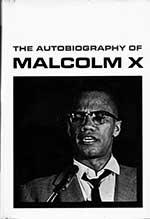
In this classic work of creative nonfiction, we get the narrative of the life of a heroic figure such as Malcolm X (El Haj Malik El Shabazz), alongside the historical sweep of the Black struggle and its myriads of political veins in America, showing not only the struggle of Black people in America but its constant reconciliation with varying ideas toward freedom, post chattel slavery. The fact that Malcolm X’s mother is from Guyana is also a major revelation which speaks to the greater Black/African diaspora.
Narrative of the Life of Frederick Douglass, An American Slave by Frederick Douglass (1845)
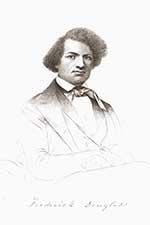
This slim narrative depicts the origin stories of the heroic freedom fighter Frederick Douglass, who helped shaped American society. Two things standout for me: How Frederick Douglass tricked a couple of white boys on the plantation he was enslaved on to teach him to read and the horrible depiction of his grandmother who was promised her freedom repeatedly yet denied until she was too old to enjoy it. Douglass’ rage at this is palpable and shows the deep cruelty of American slavery and white supremacist ideology.
Originally published by the Anti-Slavery Office, the narrative is widely available online, including through the Library of Congress.
Assata: An Autobiography by Assata Shakur (1988)
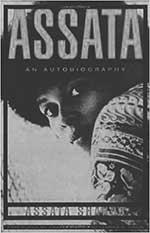
Through a prose narrative garnished with poems, we get the life story of the revolutionary Assata Shakur, who escaped from prison to Cuba following a shootout with New Jersey police. This is another Black origin story that shows us the forces that shape Black revolutionaries into a life fighting against injustice and for freedom.
HU Honorable Mentions
For over 100 years, Howard has been a center of Black literature, producing writers and scholars whose work continues to influence culture today. In light of this place in literature, it would be a disservice to not spotlight two works with historic impact: Alain Locke's "The New Negro" and Toni Morrison's first novel, "The Bluest Eye."
The New Negro: An Interpretation by Alain Locke (1925)
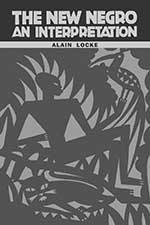
Featuring poems, essays, and fiction from many of the authors featured in this list, including Hurston, Hughes, and Toomer, "The New Negro: An Interpretation" was regarded as the definitive collection of the Harlem Renaissance, while Locke's titular essay laid a vision of a new Black identity unburdened by stereotypes or shame; one defined by a deep self-understanding, fearless self-expression, and celebration of African art. Drawing criticism from intellectuals including W.E.B. Du Bois and Harold Cruce, the work continues to be debated today.
Locke was a pivotal figure within Howard. Beginning as an associate professor in 1912, he would go on to serve as the chair of the university's Department of Philosophy from 1921 to 1953. During his tenure, he was known as the "Dean of the Harlem Renaissance," shaping African American literary, art, and cultural criticism and analysis for decades. His legacy lives on on-campus to this day, most notably through the Howard Gallery of Art, which was initially based in his own donated collection of traditional African art in 1928.
The Bluest Eye by Toni Morrison (BFA ’53) (1970)
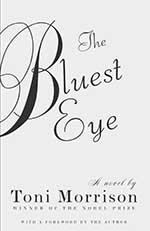
Even in her debut novel, Morrison showed an unparalleled ability to, in heartbreaking, poetic detail, shine a light on the complex ways Black people, especially Black women and girls, endure trauma at a societal and personal level. Through the slow psychological break of 11-year-old Pecola Breedlove, brought on by sexual and physical abuse, poverty, neglect, and deep internalized racism, Morrison delivers an unflinching account of the relentless combined damage racism, colorism, class, and sexism inflict, and of how these layered abuses lead to a denial of humanity, both externally and internally.
It is difficult to overstate Morrison's legacy as a writer and thinker. Author of many of the most influential works in African American literary history, including "Sula," "Song of Soloman," and "Beloved," she graduated from Howard in 1953 and went on to teach at the university for seven years. She was also an accomplished editor at Random House; Dean Dana Williams’ new biography of Morrison, “Toni at Random” details this side of the Howard alumna.
Keep Reading
-
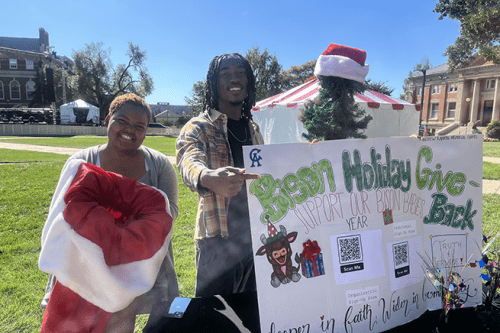 News
NewsThis Holiday Season, The Howard Community Continues to Define ‘Truth and Service’
Dec 17, 2025 4 minutes -
 Research
ResearchHoward University Civil Engineering Research Team Uses AI to Help Address Climate Change Crises
Dec 16, 2025 3 minutes -
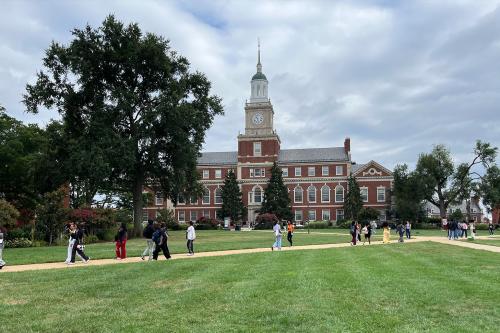
Are You a Member of the Media?
Our public relations team can connect you with faculty experts and answer questions about Howard University news and events.
Submit a Media Inquiry

